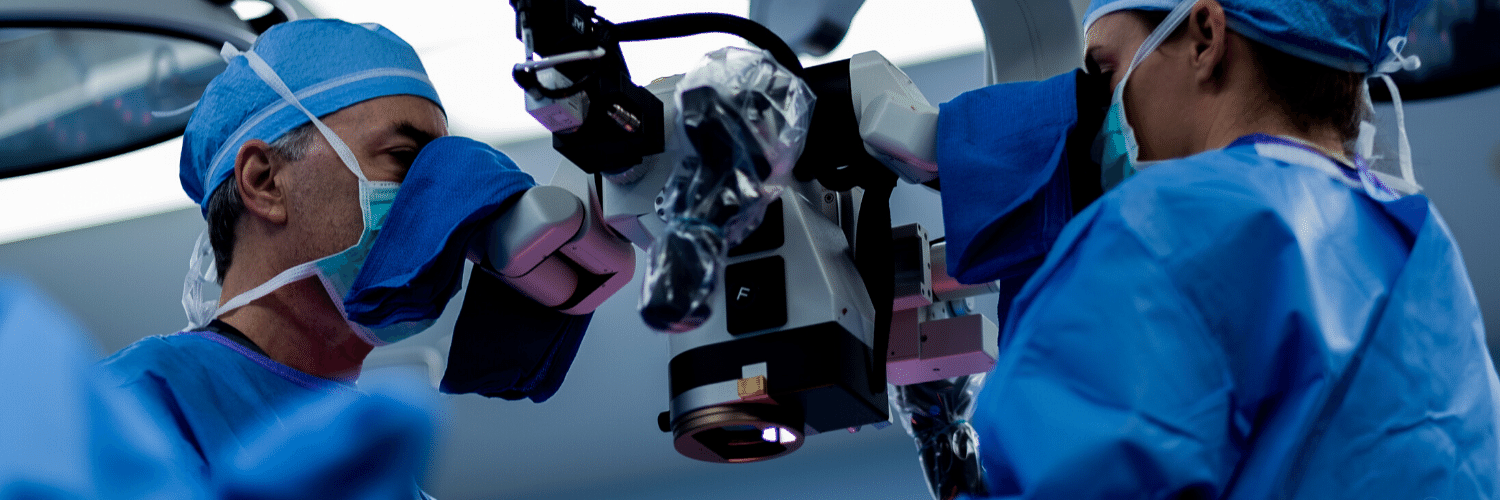
Are there ways to physically prepare for breast reconstruction surgery?
Preparing for surgery can include packing a hospital bag, arranging child care, cleaning the house and meal planning. But preparing your body for surgery is even more important. Nutrition and physical activity before and after surgery play a major role in optimizing recovery and healing.
Nutrition
Consuming a well-balanced diet is important for overall health and wellbeing. Food is the fuel that provides our bodies with the energy it needs to function properly. When preparing for surgery, it is vital to eat a nutrition-packed diet to improve healing. Crucial nutrients include protein, zinc and vitamins A and C.
So, what are the best things to eat? In addition to making sure you eat enough lean protein, a great rule to remember is to eat the rainbow!
Current research shows that foods displaying bright colors like blueberries, spinach, and beets are beneficial to our health in many ways. Various types of phytochemical pigments give fruits and vegetables their vibrant colors.
These phytochemicals act as antioxidants in our bodies. This is important, especially during a serious illness, because antioxidants help our bodies heal from toxins and destructive molecules called free radicals. These free radicals damage our tissues and can contribute to many chronic illnesses.
So, let’s break down the rainbow of foods!
When you eat fruits or vegetables that are red, orange, or yellow, you are eating a class of phytochemicals called ‘carotenoids’. Can you believe that there are over 600 known carotenoids that have been identified in various plants? However, in the food we eat as humans, there are five primary carotenoids that we typically consume. These include: alpha-carotene, beta-carotene, lycopene, beta-crypto-zanthin, and lutein.
Carotenoid phytochemicals may also decrease the risk of certain types of cancer. This may be because carotenoids improve communication between cells across the body. More efficient cellular processes make it easier to differentiate cancer cells from other cells and for the body’s immune system to target them quicker and more effectively.
Red fruits and veggies are great for your heart and brain function, especially memory. Orange fruits and vegetables are full of beta-carotene and vitamin C, which support eye health and immune function. Yellow fruits and vegetables are beneficial for the circulation.
Along with chlorophyll, carotenoids are also found in many green leafy vegetables which help strengthen the immune system, nourishing the nervous system, and warding off depression and anxiety.
Blue and purple foods are rich in antioxidants and can delay the signs of aging and decrease the risk of heart disease.
With this rainbow of pro-healing foods, you can go into surgery knowing you are nutritionally well-prepared. When getting ready for surgery, you may feel overwhelmed and will likely have many things on your ‘plate’. However, when it comes to your nutritional plate, just remember to eat the rainbow!
After breast reconstruction surgery, your body also requires more protein than normal to heal. Your body will be working hard to repair cells, heal incisions and prevent infection. High protein foods such as turkey, fish, and cheese are good items to incorporate into your diet. You can also increase your intake of protein by adding protein powder to a morning smoothie or milk and eating high protein snacks like almonds and peanuts.
Physical Activity
Staying physically active is key to maintaining limber joints and strong muscles, which will help you regain mobility more quickly after surgery. The healthier you are going into surgery, the quicker and easier your recovery will be. Getting into pre-surgery shape should include cardio exercises, stretches and muscle strengthening. If you are unsure if exercise is safe for you, check with your physician or health care provider before starting an exercise program.
Cardio
It is recommended that individuals get 20-30 minutes of cardio exercise every day. You must work moderately hard to get the heart benefits from the aerobic activity, so make sure to move at a good pace to get the heart rate going a bit. Some cardio exercises can include: Walking, jogging, cycling, aerobics or Zumba classes, swimming and dancing.
Following surgery, it is important not to overwork yourself. Once you’ve been cleared to do so by your doctor, begin regaining stamina by walking increasingly longer distances. Each day push yourself to increase your distance and stamina. DO NOT OVER EXTEND YOURSELF. Pushing yourself too hard after surgery could cause unintended complications and lengthen your recovery time. Following your doctor’s instructions and activity limitations is vital.
Stretching
Stretching before and after surgery is important to keep your muscles and joints healthy. Getting into a normal stretching schedule can be relaxing and can help prepare your body for surgery. It is vital to follow all doctor instructions after surgery as there may be certain movements that should be avoided for a brief time following the procedure.
Stretching exercises can be simple and performed just about anywhere. Stretches can be accomplished by extending a limb just slightly beyond the available range that is easy to do. Sustain the stretch for 15-30 seconds without bouncing and repeat 3 times. If you don’t know how to stretch, a beginner yoga class or stretching class at your local gym can be a good place to start.
Following surgery, it may be recommended that you follow up with a licensed physical therapist for specialized range of motion exercise training.
Muscle Strengthening
Improving your muscle strength before surgery can help you heal during recovery. By toning up you can better prepare your body for the extra effort it will take to get around the first couple of weeks after surgery. To strengthen muscles, you must incorporate resistance such as free weights, resistance bands, your body weight, or weight machines. Typical strength training is done 3 days per week. Work all the major muscle groups and attempt 3 sets of 10 repetitions for each exercise.
Remember to keep it up. Start with a routine that you can fit into your day. Some suggestions that may help keep you motivated:
- Join exercises classes in the community. Exercising with others is fun and they can help you keep your commitment.
- Set a fun goal that will keep you on track such as being able to complete a fun walk/run, then sign up!
- Tell everyone you know what you’re trying to do. The more people know, the more committed you will be. Friends and family will want to know your progress and they want you to succeed!
- Start with activities that you enjoy. If you enjoy the outdoors, plan walking or jogging sessions outside and take advantage of our local parks and trails.
- Mix it up. Keep your exercise routines fresh. Try different things in different settings and see what is enjoyable to you.
A special thanks to our authors:
Chelsea Niemiec BSND
Chelsea is the Operations & Media Manager at Powerhouse Bakery, as well as a certified Integrative Nutrition Health Coach! She has a perpetual craving for dark chocolate and going on outdoor hiking adventures with her husband, Nicholas and their Great Dane named Tobi. When she isn’t jamming to indie folk music in the kitchen at Powerhouse Bakery, she is growing lots of fresh veggies at her community garden on the west side of San Antonio. At the garden, she loves the fresh smell of basil and the subtle humming of honeybees in the morning. She loves meeting new people at Powerhouse Bakery and serving up food and kindness that nourishes the body, mind, and spirit! Head on over to www.powerhousebakery.com to learn more
Rachel Fey-Larsen, PT, CLT
Rachel Larsen, physical therapist and certified lymphedema specialist, is the president of Forté Rehabilitation and Wellness Center. She received her training in lymphedema management in 1997, and promptly established and managed the lymphedema clinic at Health South RIOSA prior to establishing Forte in 2002. She has served as an adjunct faculty member for the UTHSCSA Department of Physical Therapy, and has been guest lecturer at the UTHSCSA and the Army-Baylor physical therapy schools. She is a frequent lecturer for numerous professional and community organizations on the subject of lymphedema and other physical disorders resulting from the effects cancer and its treatment. She authored the chapter, “Decongestive Therapy for the Treatment of Lymphedema” for the fifth edition of Beards Massage, Principles and Practice of Soft Tissue Manipulation. She is an active sponsor of DIVA, a free exercise and nutrition program for breast cancer patients and survivors, offered through the non-profit organization ThriveWell. She is a member of the Oncology section of the American Physical Therapy Association, the Texas Physical Therapy Association, and the National Lymphedema Network.
Author: Chelsea Niemiec BSND, Rachel Fey-Larsen, PT, CLT and Courtney Floyd
Preparing for surgery can include packing a hospital bag, arranging child care, cleaning the house and meal planning. But preparing your body for surgery is even more important. Nutrition and physical activity before and after surgery play a major role in optimizing recovery and healing.
Leave Comment
No Comments











Susan Harris
Just a thank you beforehand to all those fabulous, dedicated doctors, nurses, support people and office staff that work so hard to keep their patients in good health both mentally and physically. I really appreciate the care and wealth of information that has been given in order to make my pre and post operation successful. Thank you!
PRMA Plastic Surgery
It’s our greatest pleasure Susan!